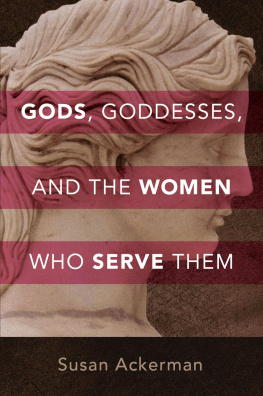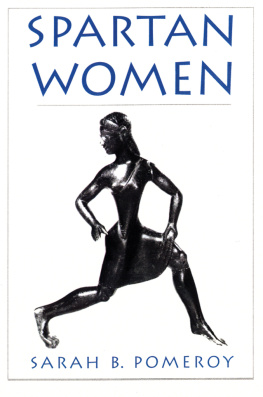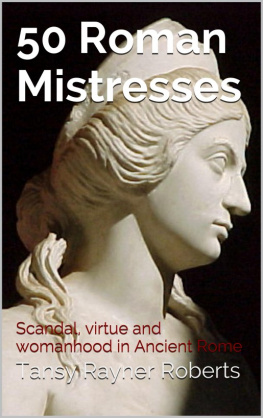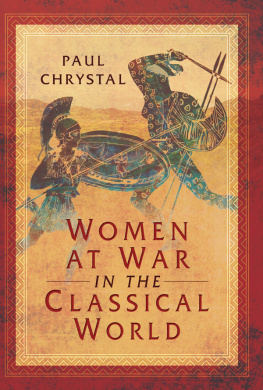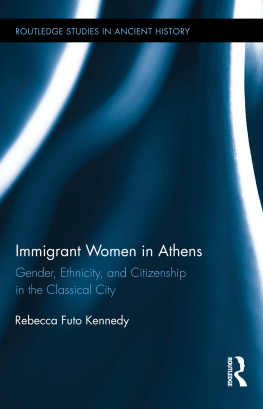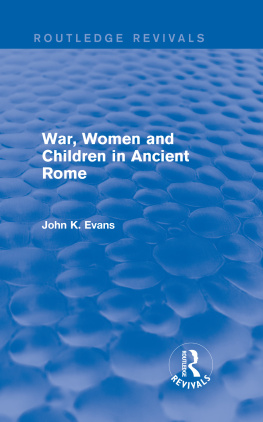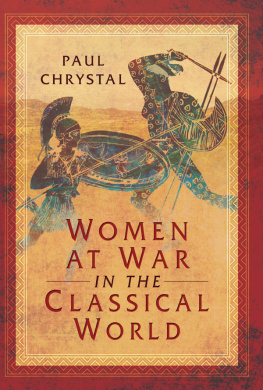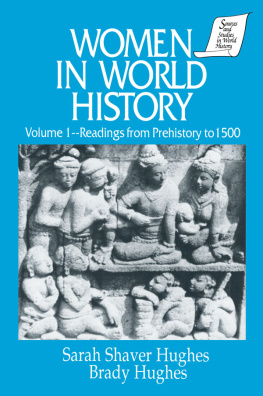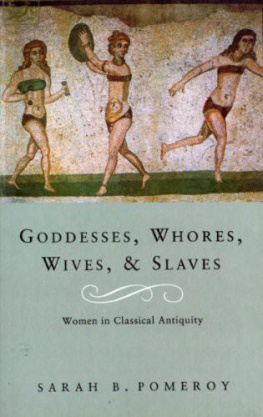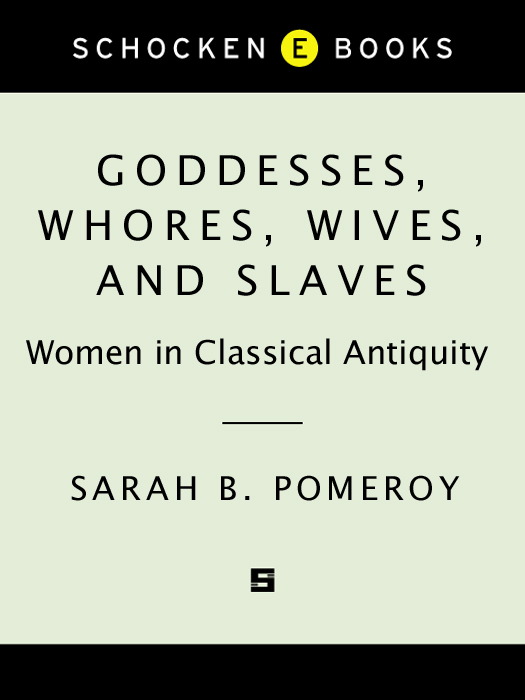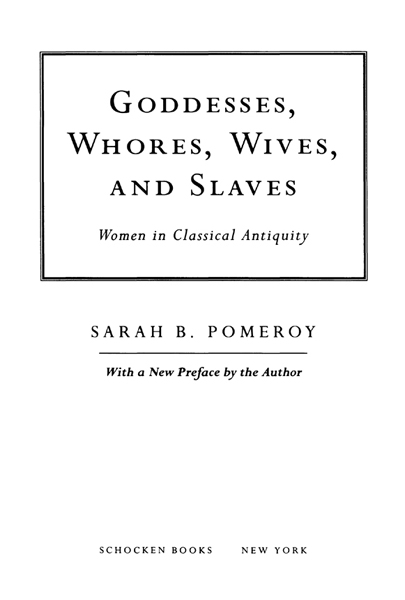
50 Years of Publishing
19451995
Copyright 1975, 1995 by Sarah B. Pomeroy
All rights reserved under International and Pan-American
Copyright Conventions. Published in the United States by Schocken
Books Inc., New York. Distributed by Pantheon Books,
a division of Random House, Inc., New York.
Library of Congress Cataloging-in-Publication Data
Pomeroy, Sarah B.
Goddesses, whores, wives, and slaves.
Bibliography.
1. WomenHistoryTo 500. 2. GreeceSocial conditions.
3. RomeSocial conditions.
I. Title. HQ1134.P64 301.4120938 74-8782
eISBN: 978-0-307-79147-4
v3.1
To Alexandra, who grew up withGoddesses
CONTENTS
CHRONOLOGICAL TABLE
(Many dates are approximate)
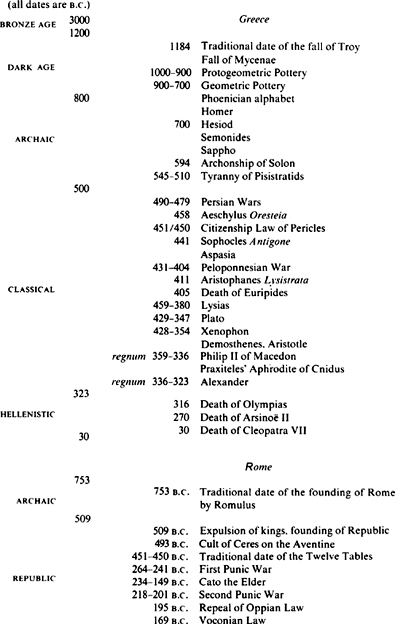
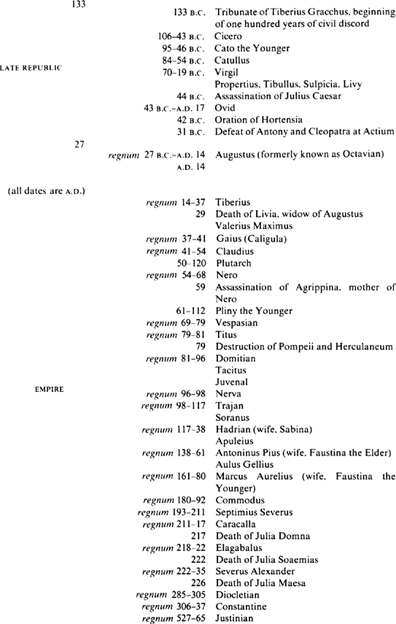
PREFACE
W HEN Goddesses was published twenty years ago, I did not anticipate the reception and long life that it would enjoy. As soon as the book appeared, it was described in Choice as the first and only scholarly book on its subject in the English language. It was widely reviewed in both the popular and the scholarly press. Goddesses was translated into Italian, German, and Spanish.
Goddesses was published early in the development of the history of women in antiquity as a field for serious research, and it established parameters for subsequent studies of the history of women in antiquity. The overall chronological organization, which draws attention to change over time in womens lives, has been preferred by most historians to the thematic or synchronic approach. The categorization by class and social status, which points to differences between wives on the one hand and whores and slaves on the other, and within social classes the additional comparisons by gender (for example, Ptolemaic queens and their brothers who are kings, and Roman matrons and upper-class Roman men), are in common use. The terms respectable and nonrespectable as applied to women have become clichs. The final important category, geographical variation, immediately observable in the distinctions between Greek women and Roman women, is nowadays axiomatic in womens history and is gradually being recognized in family history.principle in womens studies. The chronological organization, in particular, has made it easier to assimilate womens history into traditional history.
Since 1975 the study of women in antiquity has become part of the mainstream in the fields of classical studies and ancient history and many significant publications on Greek and Roman women have appeared. These include work on female artists and writers, women in Hellenistic Egypt, female sexuality, the economic contributions of women, pagan and Christian women in late antiquity, and female representation in literature and the visual arts. A sample of this work is given in the Supplemental Bibliography in the back of the present volume as well as in the notes to this Preface. This recent work uses traditional historiographical and art-historical approaches as well as the newer perspectives of feminist theory, literary theory, and gender studies.
Although I considered revising Goddesses and discussed the matter with colleagues, I decided to retain the text of Goddesses as originally written. I have not changed my mind about any essential subject covered, though of course, I would present some of this material slightly differently today. As Heraclitus declared, Everything is in process and nothing stays still, and comparing existing things to the stream of a river, he says that you would not step twice into the same river.
Nowadays I am even less willing to entertain the possibility of a prehistoric society in the Greek world in which women enjoyed a higher status than men, or were equal to them. If I were to rewrite my discussion of matriarchy I would emphasize its importance in Greek society and intellectual history as a myth. Of course, one woman who rules as queen may enjoy the highest status, but her position does not empower her female subjects. As later, well-documented historical periods show, a queen may rule in a patriarchal society. I was led to greater skepticism about prehistoric and Bronze Age matriarchy after investigating reports about Sir Arthur Evanss excavations of the Palace of Minos at Cnossus, a site which has been referred to as a principal locus for a matriarchal society and for the predominance of mother-goddess cults. The tablets also indicate that in the Bronze Age, as in later Greek society, some women played an important role in religious affairs. Finally, often using data from non-Greek societies, in recent years anthropologists and social historians have shown that matriarchy is an intellectual construct rather than a historical reality.
Furthermore, our view of women not only in prehistory but in archaic Athens must be reconsidered, for an alternative scenario is now available. The ubiquitous existence of huge gene (clans comprising numerous kinfolk) preceding the democratic reforms of Cleisthenes (508 B.C. ) has been called into question. Such gene were thought to have provided a context in which women might have participated in discussions concerning the fate of large numbers of kinfolk and their property. If, as has been argued, gene did not constitute the basis of archaic society, womens authority and interaction with distant kinsmen will then have been even less extensive than previously supposed, and will have been more on a level with their activities in the classical period. Furthermore, the participation of kinswomen in the public events of funerals conducted by the family may have been limited, even before the reforms of Solon. To a large extent, Solons laws may have reflected, rather than restricted, the role played by female members of the bereaved family.
Although, of course, much more has been written and could still be written about the subjects covered in Goddesses, our pool of ancient evidence has not increased significantly in the past twenty years. Nevertheless, some primary sources have been reexamined in the light of womens history and have been made accessible in English translation with detailed commentary. Most important are the gynecological treatises in the Hippocratic corpus and in later medical texts.and even within a limited time-span they are not monolithic. These authors disputed amongst themselves such topics as the exact nature of the mothers contribution to the fetus, the reasons why a baby is male or female, the influence of virginity and celibacy on a womans health, and whether a physician should perform an abortion. For the most part, the gynecological texts reinforce traditional ideologies, primarily defining women as creatures who bleed and breed.
Since I discussed the subject of infanticide in Goddesses, there has been a lively debate among scholars about whether infanticide was practiced, and if so, to what extent. His hypothesis is persuasive despite the fact that numbers available for demographic study of the Greek world are so few as to make generalizations hazardous. Yet, it certainly appears that womens health was inferior to that of men in the same socioeconomic group, and that their life-span was shorter.


